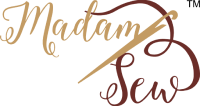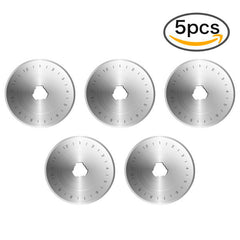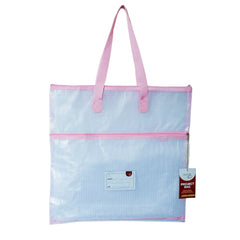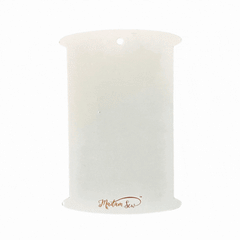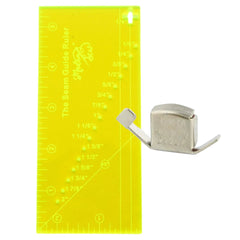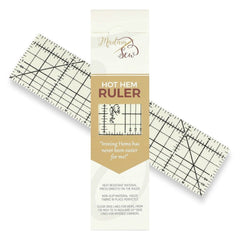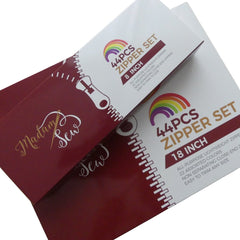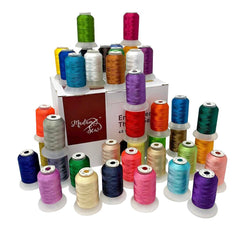Eccentric Star Block - Quilting Tutorial
This “How to Sew” an Eccentric Star Quilt Block tutorial is the fifth block in my series toward creating a small sampler quilt. Don’t want to make a sampler quilt? You can use this easy block pattern to make one block items such as placemats and pillows, or use multiple blocks to make table centerpieces, wall or other quilts.
It is Beginner to Confident Beginner rated because it is made up of one square and eight half-square triangles. It is fat quarter friendly if doing a small project or a great way to use up some of the wonderful fabrics you already have in your stash of fabrics.
The Eccentric Star quilt block is one of the many, many, different star block patterns out there. Though this particular quilt block pattern can be made using colors that do lend it a “star” look. I chose it because when I saw the pattern it looked like an eccentric flower to me. And, I like flowers.
This block is considered a variation of a nine-patch quilt block. Since many quilt blocks go by multiple names, I did a little research to see if this one did too. What I found instead is that there are several different versions of the “Eccentric Star” quilt block. Most are variations of the one we’ll be working on in this blog (see below). As for that other name, I couldn’t find any records of another name for this version though some of its variations do go by other names.
The Eccentric Star quilt block was first published in Capper’s/Famous Features (Brackman, 212-213). It was made using three fabrics like in the first picture above. The other two pictures depict different versions of an Eccentric Star block or blocks named as Eccentric Star Block.
This easy quilt block pattern is fat quarter friendly and comes together quickly allowing you to make something in a day or weekend once you master the block.
For this tutorial, I am using a fat quarter bundle that has five coordinating fabrics. I used this bundle for my last four blocks, (see Sheepfold Quilt Block tutorial, Virginia Worm Fence Block tutorial, Thrifty Quilt Block tutorial and Calico Puzzle Block tutorial). Our finished Eccentric Star quilt block will measure about 12” x 12” when sewn together. This is the last quilt block for a small sampler quilt which I’ll blog about making soon.
Let’s get started!
Supplies & Tools List
-
Three coordinating fabrics (a fat quarter of each)
-
Ironing board or pressing mat
-
Iron
-
Cutting mat
-
Sewing machine
-
¼” Quilting Foot with Guide (optional)
-
¼” Quilting Foot
-
Matching or neutral thread
-
Thread snips or small scissors
-
Seam ripper (just in case)
-
Quarter Inch Patchwork Ruler Set (optional)
-
Heat Erasable Marking Pens or other marking pen/pencil
Instructions to Sew an Eccentric Star Quilt Block
For my block, I chose to use four colors, from my fat quarter bundle, that reminded me of a flower with multi-colored petals.
NOTE: Because I’m using one fat quarter bundle for all of the blocks in this five block series. I had to make adjustments along the way when I made my block (cut my pieces) and you will too if you are doing the same. Sometimes, us quilters have to be a little creative and flexible.
The instructions in this blog are based on using full fat quarters for this project.
In the below diagram, the letters represent different fabric colors. This key will be referenced in the instructions below. Each finished square or half-square triangle in this nine-patch block will be 4 ½” square before we attach them to each other.
Step 1 - Prepare Your Fabric
Fat quarters have a ton of creases when you first get them so press those creases out as best as you can before you start cutting. If you are having trouble doing this as sometimes happens, spray a little water on the fabric before pressing. Then, cut off any selvage (Fat quarters only have selvage on one side.) Also straighten one long side.
Step 2 - Cutting Strips and Squares
From Fabric A: Cut two long 4 ⅞” wide strips. I like to use my longest ruler, 6”x24”, for the longer cuts. Then cut the strips into eight 4 ⅞” x 4 ⅞” squares. These will be used later to make our half-square triangles.
From Fabric B: Cut one long 4 ⅞” wide strip. Then cut the strip into two 4 ⅞” x 4 ⅞” squares. These will be used later to make our half-square triangles.
From Fabric C: Cut one 4 ⅞” wide strip. Then cut the strip into two 4 ⅞” x 4 ⅞” squares. These squares will be used later to make our half-square triangles.
From Fabric D: Cut one 4 ½” strip. Then cut one four 4 ½” x 4 ½” square from this strip.
Step 3 - Sewing The Block - Part 1
We are going to make our half-square triangles now. For these, I use a Quarter Inch Patchwork ruler.
Take one 4 ⅞” Fabric A square and one 4 ⅞” Fabric B square. Put them with the right sides together with the lighter of the two fabrics on top.
Using the Quarter Inch Patchwork Ruler, line up the middle line of the ruler with the two opposite corners and draw a line on both sides of the ruler. You will be using these lines as your sewing guide and sewing a thread or two just inside of those lines. At this point, you can clip or pin your pieces together before sewing or not…it all depends on what works best for you.
Tip: If you don’t have this handy ruler, you can always draw a line from one corner to the other on your square and then sew a scant ¼” away from the line on each side.
Repeat with the other three 4 ⅞” Fabric A and 4 ⅞” Fabric B squares. Repeat with the remainging four 4 ⅞” Fabric A and all of the 4 ⅞” Fabric C squares.
For sewing the lines, I used a ¼" quilting foot. Most sewing machines come with this foot. It is also available as part of our Ultimate Presser Foot Set.
Sew over a leader scrap of fabric. Stop sewing when the edge of the scrap is just before the needle. Do not raise your presser foot. Take a look at the stitching on this piece. Once you are satisfied that your stitches look good and there are no issues, continue with this step.
Tip: Don’t skip this step of checking to make sure your stitches are coming out okay. I did and had to redo my sewing because something was off with the tension. It happens…
Using the lines we drew with the Quarter Inch Patchwork Ruler, sew just inside of those lines. This results in the scant quarter inch everyone is always talking about. To make things go faster, chain sew all of the A-B and A-C units.
Tip: Practice sewing just inside the line on a scrap piece of fabric or you may end up having to grab your seam ripper and redo a few of your units. Also, if you are having trouble when getting to the end of your sewing, a sewer’s magic wand is very helpful.
When done sewing, using a cutting quilting ruler, mat and rotary cutter, cut down the middle between your sewn lines cutting from corner to corner. I like to use my 6”x12” cutting ruler for this step.
Use a rolling seam presser or iron and press your half-square triangle units open. I recommend pressing toward the dark side, if there is one, so your seams don’t show through the lighter fabric.
Now, cut off the little ears. And, if needed, square up your half-square triangles so they are 4 ½” square. I like to use my 6” square ruler and a rotating cutting mat to square these small pieces.
You should end up with four A+B and four A+C half square triangles like the ones below.
Step 4 - Sewing the Block - Part 2
We are about to sew our Eccentric Star block units into rows. But before you do, use the below Row Layout Diagram to lay out all of your blocks units.
I always do this before sewing a block. This is a good cross-check to make sure you have all of the units needed and that they are in the correct position for the quilt pattern you are making. Doing this also helps facilitate chain piecing.
TIP: Use “sticky notes” to label the rows. That way, if you need to step away from the project for a little bit, it’s easy to start right back up.
We are going to chain piece to save on thread and time and we’ll be using two scrap pieces of fabric so you don’t have to stop chain piecing.
Let’s go!
Sew over one fabric scrap and stop sewing when the edge of the scrap is just after the needle. Do the same cross-check of stitching as we did earlier with our leader fabric. Once you are satisfied that your stitches look good you will chain sew as follows:
Starting from the middle column:
• From Row 1, flip your C-A half-square triangle (from the middle column) to the left onto the A-C half-square triangle and with right sides facing, sew them together using a ¼” seam allowance.
• From Row 2, flip your D square (from the middle column) left onto the A-B half-square triangle and with right sides together using a ¼” seam allowance.
• From Row 3, flip your A-C half-square triangle (from the middle column) to the left onto the B-A half-square triangle and with right sides facing, sew them together using a ¼” seam allowance.
• Sew through your other fabric scrap and stop once you are at the edge of the scrap.
Clip the threads between your first fabric scrap and between all of your sewn units and the scrap fabric that is currently under the needle on the sewing machine. Lay the sewn units back out in their spots as shown in the below picture. If you accidentally rotated something or sewed in the wrong place, just grab your seam ripper and fix the mistake. It happens to all of us at one time or another.
TIP: Keep the sticky notes on your rows for this next step. It makes laying them back out easier.
Now we will continue our chain piecing.
• From Row 1, flip the A-B half-square triangle to the left onto the sewn two-unit set and sew it on.
• From Row 2, flip the B-A half-square triangle to the left and sew the fabric D piece.
• From Row 3, flip the C-A half-square triangle to the left onto the sewn two-unit set and sew it on.
• Sew through a fabric scrap and stop once you are at the edge of the scrap.
Clip the threads between your scrap fabrics and fabric rows. Lay your sewn rows out in order so that they look like the picture below.
Don’t panic if the triangles don’t seem quite lined up with the edge…remember, you’ll still be sewing more ¼” seams and that should take care of those.
Before we go any further, we are going to press our seams. You’ll want to press Rows 1 and 3 in one direction and Row 2 in the opposite direction. After pressing, lay the rows back out again as in the picture above. Then we’ll be ready to sew again.
Step 5 - Sewing The Block - Part 3
Now you are ready to finish sewing your block together!
Take Row 1 (top row) and flip it down over Row 2 (middle row) so the right sides are facing together. Line up and nest your seams.
Seams stay matched better if you use pins next to or in the seams to keep them from moving during sewing. This also helps get a more accurate seam in the end. Before you start sewing, double check that the seams or strips didn’t shift while you were pinning. If they did, re-pin now so you don’t have to take out the seam with a seam ripper and re-do everything.
Sew these strips together using a ¼” seam allowance. You should get matching seams at the intersections when you are done. Redo if necessary. (Sometimes, if it is not too far off and I’m learning, making a project for me or a loved one, I do leave it…guilty. In these cases, I hope it won’t be as obvious once the quilting is done. But, I wouldn’t do that on a show quilt or one I planned to sell as those need to be as perfect as possible. Give yourself grace when learning.)
Finally, take Row 3 (bottom row) and flip it up onto Row 2 (middle row) so the right sides are together. Match up and nest your seams. Pin and then sew using a ¼” seam allowance. Your seams should line up.
Step 6 - Press and Square-Up the Block
For this press, close your strips over themselves so you can see the stitching on the wrong side and press, holding your iron in place for a few seconds to “set” the seams so the threads nestle down into the fabric resulting in flatter seams.
Now open your block and press your seams away from the middle toward the top and the bottom of the block.
TIP: If the seams do not easily fall into position for pressing, you can do a quick finger press to encourage them to do so.
Your finished block might not be quite 12” x 12” as the seam sewing may have taken up some of the size. If you are going to make several of these blocks for a project, be consistent in how you make them, straighten their edges and square them up before you put them into your final project. You may need to square all blocks in a larger project to the “smallest” block you made…or redo any errant blocks.
TIP: To square up a block, measure in both directions to see what the shortest width is of your block and square it to that. I like to measure through the middle, and through both corners, better more information than not enough. And…if you have a slightly different way to square up your block, feel free to do what works for you.
Be careful not to over-cut while squaring up. I use my self-healing cutting mat, cutting ruler, and rotary cutter for this part.
You did it, you finished an Eccentric Star Quilt Block in six simple steps. It’s that easy!
Additional Color Options for the Eccentric Star Quilt Block
Here are these blocks in a 2x2 layout showing how these color changes will affect the overall effect on the project.
Now that I see it…I think I’d like to make the five color variation project in the future… :).
Just for fun, here are some pictures of these same blocks with sashing. For the last one I also added a border.
If you haven’t noticed, I like bright colors. But just imagine prints instead of solids. Have fun and don’t be afraid to experiment!
In Conclusion
Today, you learned how to make a simple quilt block that is fast and easy to sew. The final designs and project possibilities using the Eccentric Star quilt block are many. We would love to see your color combinations and the projects you made using this quilt block. It’s so encouraging to see what everyone does. Share them with us on our Facebook Page!
Like to have a written copy to follow? Print out the PDF.
Prefer to see how it’s done visually? Watch the Eccentric Star Block YouTube Video.
I hope all of the steps in this quilt tutorial are clear and you had fun making your block. If you are a complete beginner and you need more guidance for quilting in general, you can take a look at our extensive quilting beginner guide. Or if you want to learn about other blocks we’ve blogged about, check those out too!
Cathy Jaynes
Product Developer and Quilt Blogger for MadamSew.com
Work Cited:
Brackman, Barbara. Encyclopedia of Pieced Quilt Patterns. American Quilter’s Society, 1993.
Madam Sew is an online sewing and quilt shop. We carry the most amazing quilting and sewing supplies! Visit our sewing and quilting store and find out about our remarkable quilting tools, universal sewing machine feet, qualitative notions, sewing essentials, organizers and much more for sewists and quilters. And know that every product comes with clear instructions, tutorial videos and craft inspiration.
Come in, visit us at www.madamsew.com, take a look around on our webstore and discover the wealth of sewing projects and inspiration, quilt blogs, YouTube sewing tutorials and free patterns we created or shared over the years.
Do you want to get in touch with other sewing and quilting enthusiasts? Join our lively Facebook communities too!
